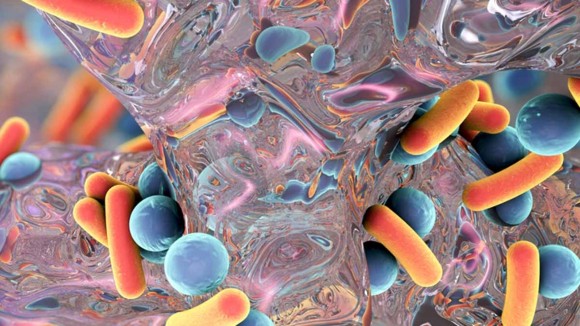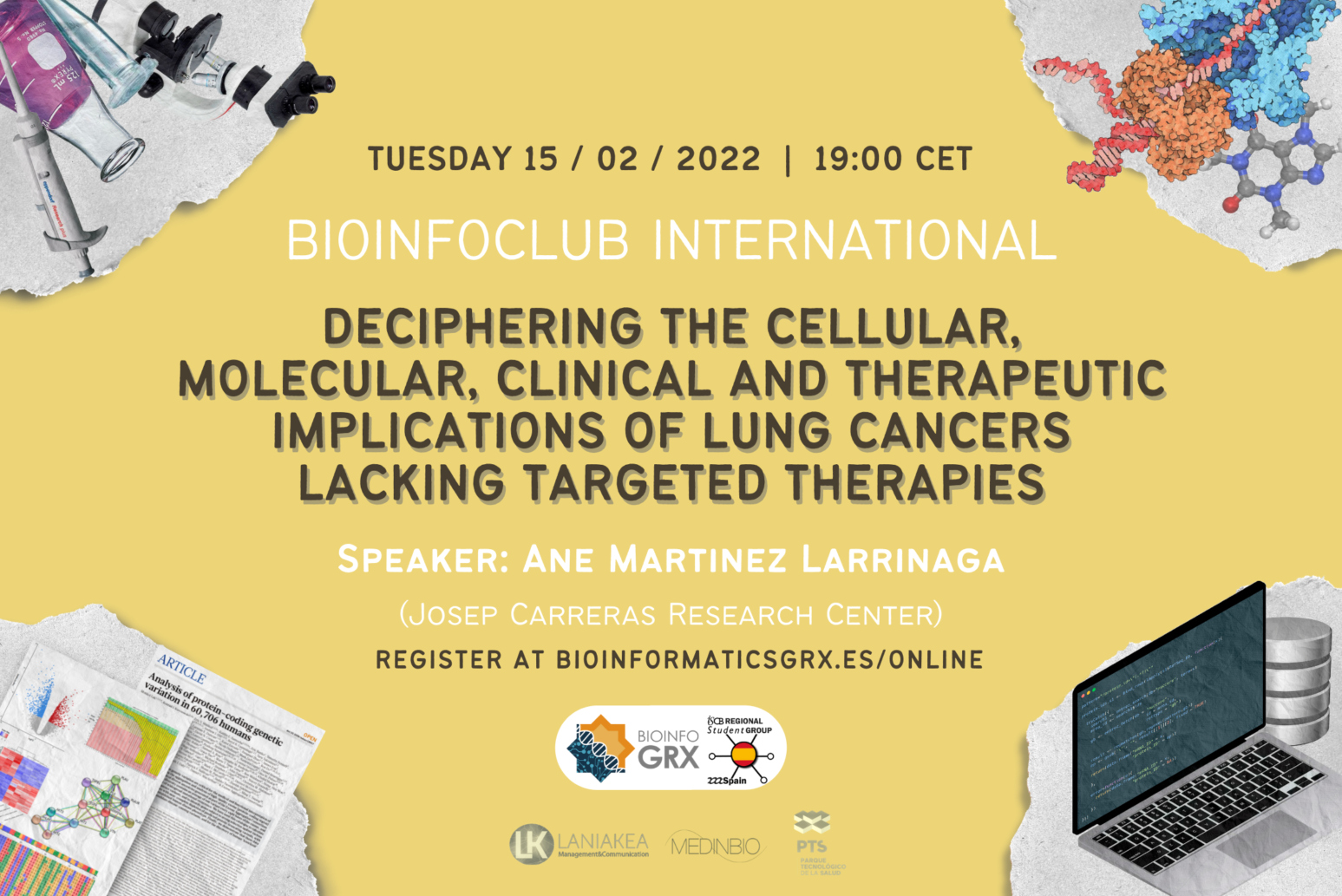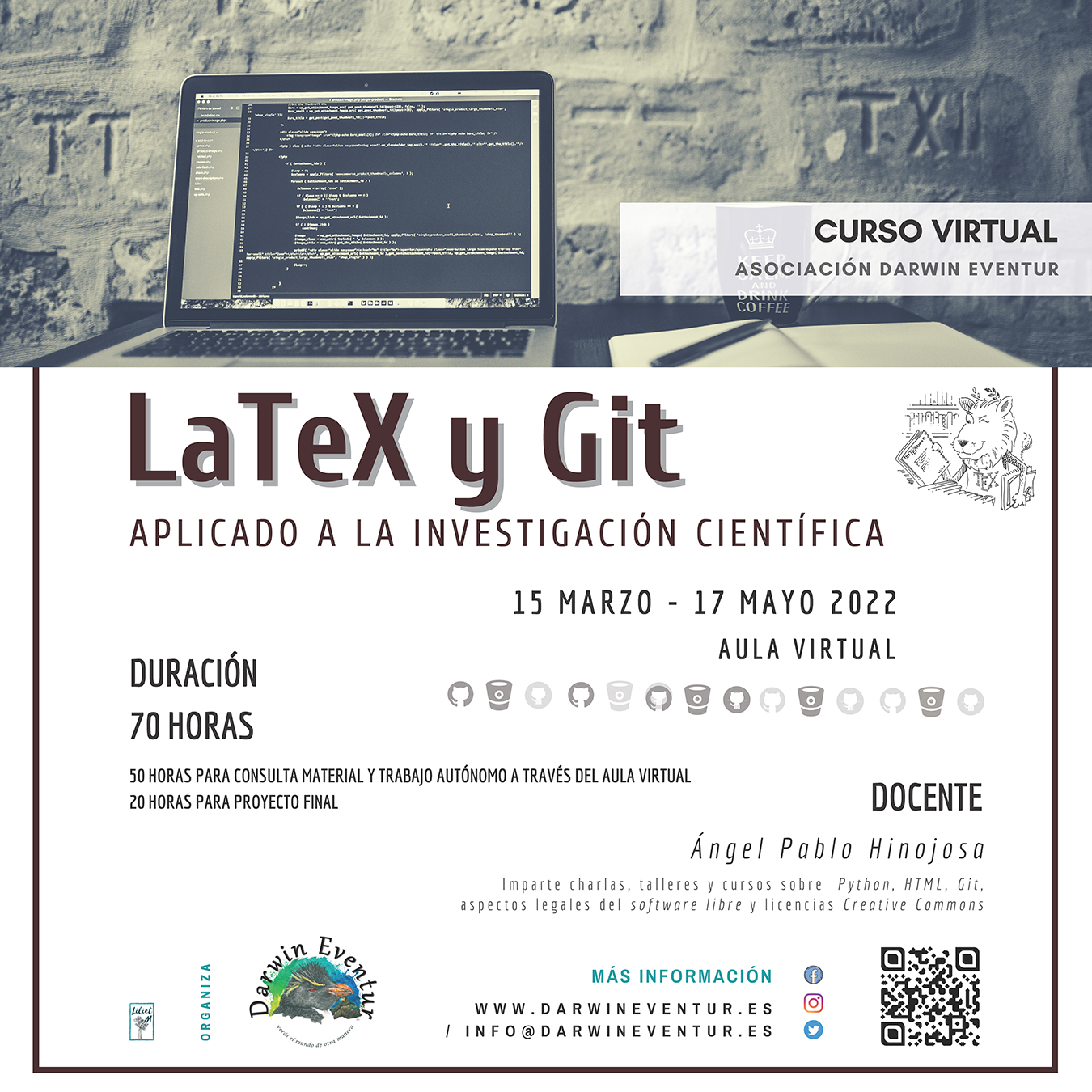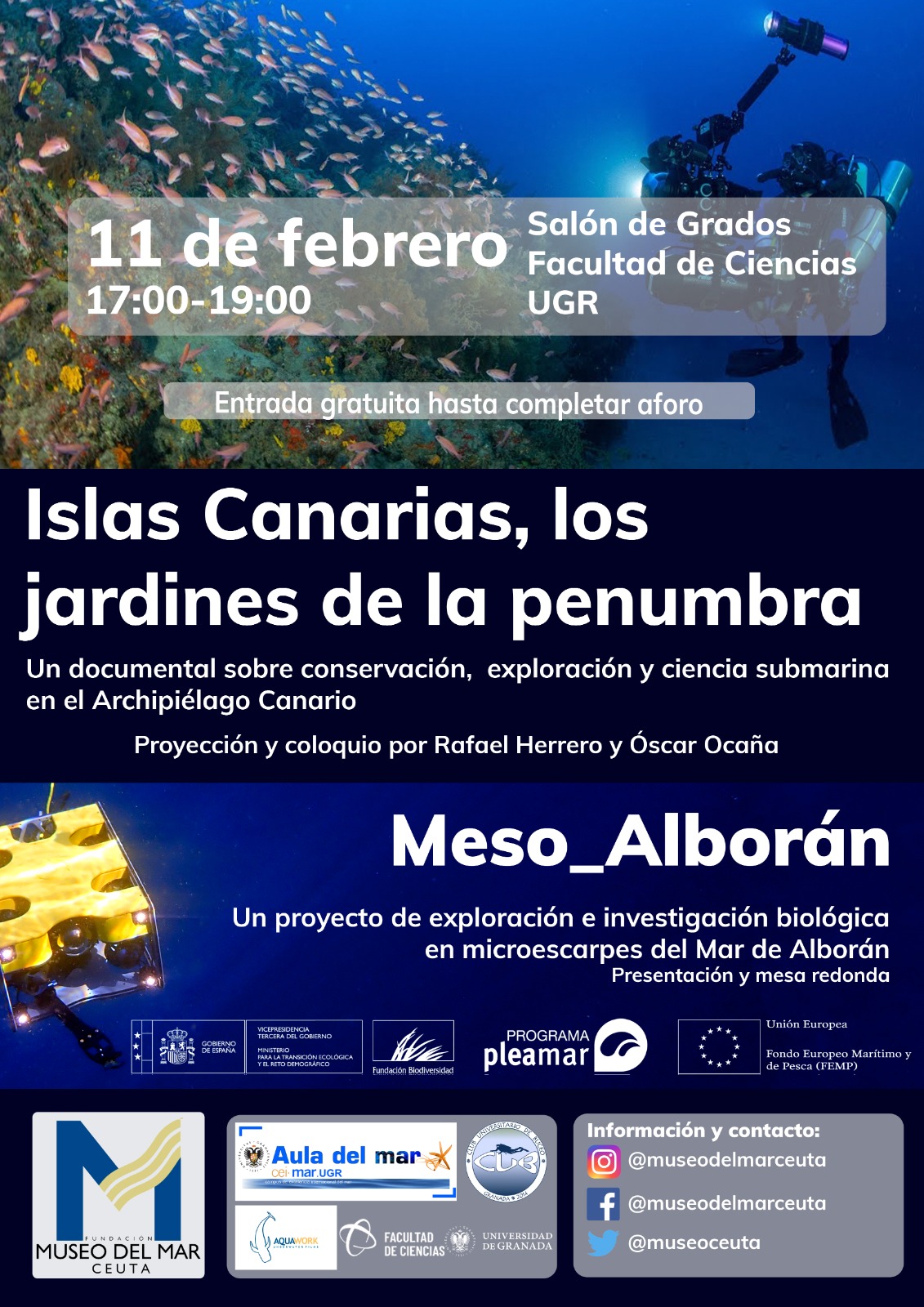Noticias
Fecha: 15 de febrero de 2022.
Hora: 19h a 20h.
Lugar: Evento online.
Ponente: Ane Martinez, PhD student (Josep Carreras Research Center).
Idioma: Inglés.
Lung cancer remains the most common cancer worldwide, both in terms of incidence and mortality. Lung cancer is classified in two broad histologic classes, which grow and spread differently: small-cell lung carcinomas (SCLC) and non-small cell lung carcinomas (NSCLC). In this project we focused our analysis in the two predominant subtypes of NSCLC which are : lung adenocarcinoma (LUAD) and lung squamous cancer (LUSC). LUAD and LUSC have a high mutational rate, however, around one third of LUAD patients lack druggable genomic mutations and can’t benefit from target therapies. The main hypothesis of this project was that from gene expression data we could identify different subgroups in LUAD and LUSC. Furthermore, we hypothesized that if we were able to understand the molecular and cellular mechanism that differentiated these groups, we would predict specific drugs that may induce an antitumor effect on each group genotype. In this talk we will discuss which bioinformatics analysis we performed, the results we got and finally which were the conclusions.
Organiza: BioInfoGRX (RSG Spain Granada)
Más información e inscripciones
Inicio: 15 de marzo de 2022 (la matriculación permanecerá abierta hasta una semana antes del inicio o hasta cubrir cupo).
Duración: 70 horas.
Modalidad: 100% virtual.
El curso será impartido por:
D. Pablo Hinojosa Gutiérrez: Es autor del libro “Aprende Git… y, de camino, GitHub“. Además, ha trabajado como programador, diseñador, administrador y diseño web. Imparte charlas, talleres y cursos sobre temas relacionados con la programación y la tecnología, como Python, HTML, Git, XML, además de liberación de software, aspectos legales del software libre, redes sociales y el e-commerce, licencias Creative Commons, entre otros.
Va dirigido a toda la comunidad universitaria y a todo el público interesado.
Organiza: Asociación de Antiguos Alumnos de la Universidad de Granada, Darwin Eventur
Fecha: 11 de febrero de 2022.
Hora: 17:00h a 19:00h.
Lugar: Salón de Grados de la Facultad de Ciencias de la UGR.
Islas Canarias, los jardines de la penumbra
Un documental sobre conservación, exploración y ciencia submarina en el Archipielago Canario.
Proyección y coloquio por Rafael Herrero y Óscar Ocaña.
Meso_Alborán
Un proyecto de exploración e investigación biológica en microescarpes del Mar de Alborán.
Presentación y mesa redonda.

Fecha: viernes, 4 de febrero de 2022.
Hora: 17:00 a 19:00.
Lugar: Aula C21. Edificio Mecenas.
Ponentes: María García de Velasco y Sergio Fernandez Santiago (Greening Energía).
Dentro del ciclo organizado en el Máster en Electrónica Industrial.
Fecha: Viernes 4 de Febrero de 2022.
Hora: 12:00.
Lugar: Aula de Física Computacional. Planta baja del edificio de Física. Facultad de Ciencias. También online en Google Meet.
Ponente: Matteo Sireci. Universidad de Granada.

Abstract: The question of how coexistence of species is generated and maintained is as old as ecology itself. Many ecological “forces” such as competition, cooperation, demographic fluctuation, environmental fluctuation and filtering, migration, predation etc. are expected to act together in ecosystems. Disentangling the effect and intensity of each of theses forces in natural communities is the focus of present research. Thanks to a recent revolution in the availability of high quality data, natural microbial ecosystems offer an invaluable possibility to tackle this question. Here, we explore if it is possible to discriminate a dominant force at a give resolution of genetic similarity. By using both relative-abundances and metagenomic data, we reveal the presence of a new macroecological law relating correlation and phylogenetic similarity. In particular, the average correlation of species abundance fluctuation decays with phylogenetic distance from positive to null values following a stretch exponential function consistently in all empirically analyzed biomes both across communities (hosts) and in temporal data for each community. By scrutinizing different ecological models, we show that competition cannot reproduce the observed pattern. Instead, the elucidated macroecological law is explained quantitatively by the “correlated stochastic logistic model” (CSLM) pointing to environmental filtering as the dominant ecological force at this resolution level. We conclude by arguing that in order to understand interactions in microbial ecosystems one needs to abandon the concept of species and study the system from different scales, much as done in physics exploiting renormalization-group ideas.

Fecha: 3 de Febrero de 2022.
Hora: de 12:30 a 13:30.
Lugar: Aula B01 de la Facultad de Ciencias.
Ponente: Saúl Navarro Marchal (Universidad de Granada).
Organiza: Grupo de Física de Fluidos y Biocoloides de la UGR.
Las últimas tendencias en la investigación del cáncer y la nanomedicina se centran en el uso de nanotransportadores para dirigirse a las células madre del cáncer (CSC). En concreto, las nanocápsulas líquidas lipídicas (LLNC) suelen desarrollarse como nanotransportadores para la administración de fármacos lipofílicos. En este caso, desarrollamos nanocápsulas líquidas de aceite de oliva (O2LNC) funcionalizadas mediante el acoplamiento covalente de un anticuerpo anti-CD44-FITC (αCD44). En primer lugar, las O2LNC están formadas por un núcleo de aceite de oliva rodeado por una cubierta que contiene fosfolípidos, un surfactante no iónico y moléculas de ácido desoxicólico. A continuación, los O2LNCs se recubrieron con un anticuerpo αCD44 (αCD44-O2LNC). Se demostró la optimización de un procedimiento de recubrimiento de αCD44, una completa caracterización físico-química, así como una clara evidencia de su eficacia in vitro e in vivo. Nuestros resultados indican la alta captación dirigida de estas αCD44-O2LNCs y el aumento de la eficacia antitumoral (hasta cuatro veces) de las αCD44-O2LNCs cargadas de paclitaxel en comparación con el paclitaxel libre en las PCSCs. Además, las αCD44-O2LNCs fueron capaces de dirigirse selectivamente a las PCSCs en un modelo de xenotransplante ortotópico in vivo.








